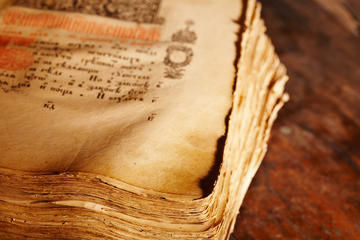Codex Atlanticus
TIME : 2016/2/22 11:43:15

Codex Atlanticus
Leonardo da Vinci was famous for keeping extensive notes, sketching designs for things that were way beyond his time and writing in code so his discoveries wouldn't be stolen. Some of those writings are cataloged in what's known as the “Codex Atlanticus,” a 12-volume set spanning more than 40 years, and part of this astounding collection is housed in Milan's Biblioteca Ambrosiana.
Da Vinci spent much of his lifetime simply jotting down notes. In the 16th century, those notes were collected by a sculptor into what we now call the Codex Atlanticus. It was acquired by the Biblioteca Ambrosiana in the 1630s, then stolen by Napoleon's army in the early 1800s. After the Napoleonic occupation, the Codex was returned to Milan, and restoration work has been done on the volumes throughout different points in the 20th and 21st centuries.
Leonardo started writing in what would become the Codex in 1478, and over the next 41 years he would add nearly 1,120 pages to the collection. The subject matter ranges wildly, from designs that would allow man to fly to mathematical equations to plant studies.
Practical Info
The Codex Atlanticus is an enormous amount of paper, so it's actually on display in two places in Milan. Most of it is at the Biblioteca Ambrosiana (open Tuesday-Sunday, 10 a.m.–6 p.m.), and some is at the Bramante Sacristy (open Monday 9:30 a.m.-1 p.m. and 2 p.m.-6 p.m., Tuesday-Sunday 8:30 a.m.-7 p.m.). Tickets cost €15 for the Biblioteca Ambrosiana, €10 for the Bramante Sacristy and €20 if you want to visit both.
